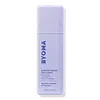What's inside
What's inside
 Key Ingredients
Key Ingredients

 Benefits
Benefits

 Concerns
Concerns

 Ingredients Side-by-side
Ingredients Side-by-side

Water
Skin ConditioningGlycerin
HumectantButylene Glycol
HumectantPentaerythrityl Tetraisostearate
EmollientButylene Glycol Dicaprylate/Dicaprate
EmollientDiisostearyl Malate
EmollientCetyl Ethylhexanoate
EmollientMethyl Trimethicone
Skin ConditioningButyrospermum Parkii Butter
Skin ConditioningPhenyl Trimethicone
Skin ConditioningBehenyl Alcohol
EmollientCetearyl Olivate
Cetearyl Alcohol
EmollientSqualane
EmollientPersea Gratissima Oil
Skin ConditioningSorbitan Olivate
EmulsifyingC14-22 Alcohols
Emulsion StabilisingEctoin
Skin ConditioningDipropylene Glycol
HumectantSimethicone
EmollientEthylhexylglycerin
Skin ConditioningSphingolipids
EmollientArachidyl Glucoside
Emulsifying1,2-Hexanediol
Skin ConditioningGlucose
HumectantCeramide NP
Skin ConditioningPolyacrylate-13
Hydroxyacetophenone
AntioxidantPalmitic Acid
EmollientArachidyl Alcohol
EmollientC11-13 Isoparaffin
SolventStearic Acid
CleansingC12-20 Alkyl Glucoside
EmulsifyingHydrogenated Polyisobutene
EmollientIsohexadecane
EmollientCaprylyl Glycol
EmollientDimethiconol
EmollientAllantoin
Skin ConditioningCarbomer
Emulsion StabilisingAmmonium Acryloyldimethyltaurate/Vp Copolymer
Tromethamine
BufferingSodium Hyaluronate
HumectantPolyglyceryl-10 Laurate
Skin ConditioningEthylhexyl Palmitate
EmollientSorbitan Isostearate
EmulsifyingSodium Phytate
Cyanocobalamin
Skin ConditioningDipotassium Glycyrrhizate
HumectantTocopherol
AntioxidantWater, Glycerin, Butylene Glycol, Pentaerythrityl Tetraisostearate, Butylene Glycol Dicaprylate/Dicaprate, Diisostearyl Malate, Cetyl Ethylhexanoate, Methyl Trimethicone, Butyrospermum Parkii Butter, Phenyl Trimethicone, Behenyl Alcohol, Cetearyl Olivate, Cetearyl Alcohol, Squalane, Persea Gratissima Oil, Sorbitan Olivate, C14-22 Alcohols, Ectoin, Dipropylene Glycol, Simethicone, Ethylhexylglycerin, Sphingolipids, Arachidyl Glucoside, 1,2-Hexanediol, Glucose, Ceramide NP, Polyacrylate-13, Hydroxyacetophenone, Palmitic Acid, Arachidyl Alcohol, C11-13 Isoparaffin, Stearic Acid, C12-20 Alkyl Glucoside, Hydrogenated Polyisobutene, Isohexadecane, Caprylyl Glycol, Dimethiconol, Allantoin, Carbomer, Ammonium Acryloyldimethyltaurate/Vp Copolymer, Tromethamine, Sodium Hyaluronate, Polyglyceryl-10 Laurate, Ethylhexyl Palmitate, Sorbitan Isostearate, Sodium Phytate, Cyanocobalamin, Dipotassium Glycyrrhizate, Tocopherol
Water
Skin ConditioningPanthenol
Skin ConditioningLinoleic Acid
CleansingCoco-Caprylate
EmollientGlycerin
HumectantC15-19 Alkane
SolventPersea Gratissima Oil
Skin ConditioningPolyglyceryl-6 Distearate
EmulsifyingSaccharomyces Ferment
Skin ConditioningDimethicone
EmollientGlyceryl Stearate
EmollientHelianthus Annuus Seed Oil
EmollientPhytonadione Epoxide
AstringentUbiquinone
AntioxidantLinolenic Acid
CleansingLauroyl Lysine
Skin ConditioningHaematococcus Pluvialis Extract
AntioxidantSqualene
EmollientBeta-Sitosterol
Emulsion StabilisingDimethicone/Vinyl Dimethicone Crosspolymer
Skin ConditioningXanthan Gum
EmulsifyingDisodium Stearoyl Glutamate
CleansingSclerotium Gum
Emulsion StabilisingTocopherol
AntioxidantPhenoxyethanol
PreservativeEthylhexylglycerin
Skin ConditioningWater, Panthenol, Linoleic Acid, Coco-Caprylate, Glycerin, C15-19 Alkane, Persea Gratissima Oil, Polyglyceryl-6 Distearate, Saccharomyces Ferment, Dimethicone, Glyceryl Stearate, Helianthus Annuus Seed Oil, Phytonadione Epoxide, Ubiquinone, Linolenic Acid, Lauroyl Lysine, Haematococcus Pluvialis Extract, Squalene, Beta-Sitosterol, Dimethicone/Vinyl Dimethicone Crosspolymer, Xanthan Gum, Disodium Stearoyl Glutamate, Sclerotium Gum, Tocopherol, Phenoxyethanol, Ethylhexylglycerin
 Reviews
Reviews

Ingredients Explained
These ingredients are found in both products.
Ingredients higher up in an ingredient list are typically present in a larger amount.
Ethylhexylglycerin (we can't pronounce this either) is commonly used as a preservative and skin softener. It is derived from glyceryl.
You might see Ethylhexylglycerin often paired with other preservatives such as phenoxyethanol. Ethylhexylglycerin has been found to increase the effectiveness of these other preservatives.
Glycerin is already naturally found in your skin. It helps moisturize and protect your skin.
A study from 2016 found glycerin to be more effective as a humectant than AHAs and hyaluronic acid.
As a humectant, it helps the skin stay hydrated by pulling moisture to your skin. The low molecular weight of glycerin allows it to pull moisture into the deeper layers of your skin.
Hydrated skin improves your skin barrier; Your skin barrier helps protect against irritants and bacteria.
Glycerin has also been found to have antimicrobial and antiviral properties. Due to these properties, glycerin is often used in wound and burn treatments.
In cosmetics, glycerin is usually derived from plants such as soybean or palm. However, it can also be sourced from animals, such as tallow or animal fat.
This ingredient is organic, colorless, odorless, and non-toxic.
Glycerin is the name for this ingredient in American English. British English uses Glycerol/Glycerine.
Learn more about GlycerinPersea Gratissima Oil is also known as avocado oil.
Avocado Oil has antioxidant properties. It is mostly made up of the glycerides of fatty acids. About 67% of these fatty acids is made up of oleic acid. Palmitic acid and linoleic acid are also present.
These fatty acids help hydrate and soften the skin. It may increase collagen content in the skin. Collagen helps keep your skin plump and firm. This ingredient helps reduce inflammation and has not shown to clog pores.
This ingredient may not be fungal-acne safe due to its high fatty acid content.
Avocados also have B vitamins, vitamin K, vitamin C, vitamin E, and potassium.
Learn more about Persea Gratissima OilTocopherol (also known as Vitamin E) is a common antioxidant used to help protect the skin from free-radicals and strengthen the skin barrier. It's also fat soluble - this means our skin is great at absorbing it.
Vitamin E also helps keep your natural skin lipids healthy. Your lipid skin barrier naturally consists of lipids, ceramides, and fatty acids. Vitamin E offers extra protection for your skin’s lipid barrier, keeping your skin healthy and nourished.
Another benefit is a bit of UV protection. Vitamin E helps reduce the damage caused by UVB rays. (It should not replace your sunscreen). Combining it with Vitamin C can decrease sunburned cells and hyperpigmentation after UV exposure.
You might have noticed Vitamin E + C often paired together. This is because it is great at stabilizing Vitamin C. Using the two together helps increase the effectiveness of both ingredients.
There are often claims that Vitamin E can reduce/prevent scarring, but these claims haven't been confirmed by scientific research.
Learn more about TocopherolWater. It's the most common cosmetic ingredient of all. You'll usually see it at the top of ingredient lists, meaning that it makes up the largest part of the product.
So why is it so popular? Water most often acts as a solvent - this means that it helps dissolve other ingredients into the formulation.
You'll also recognize water as that liquid we all need to stay alive. If you see this, drink a glass of water. Stay hydrated!
Learn more about Water